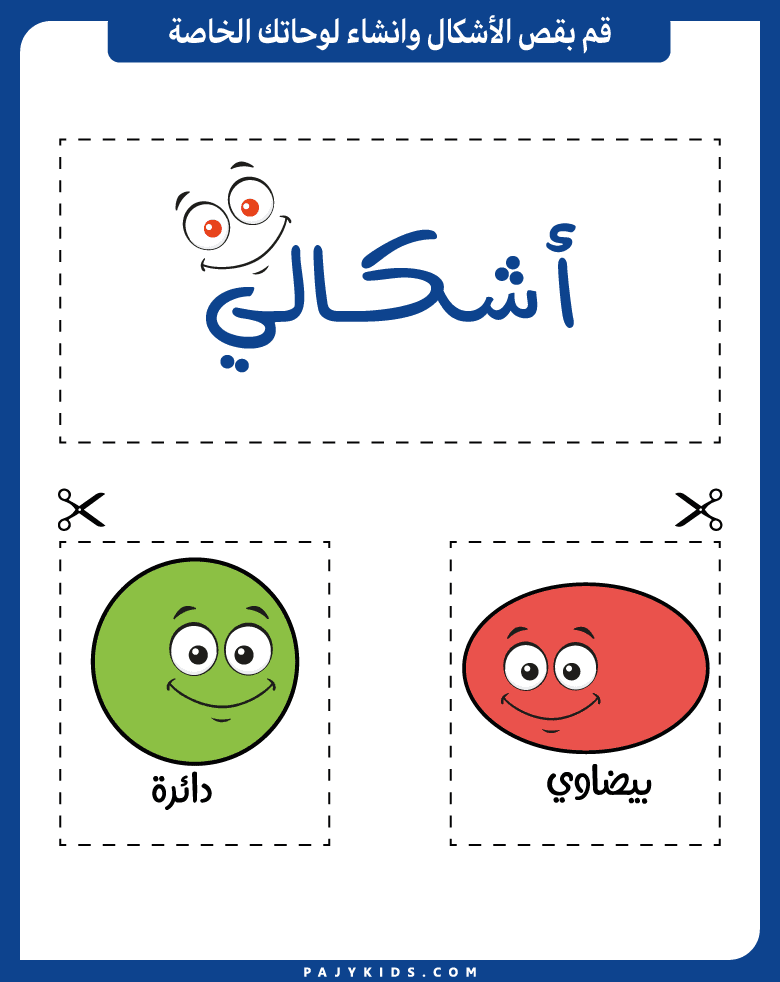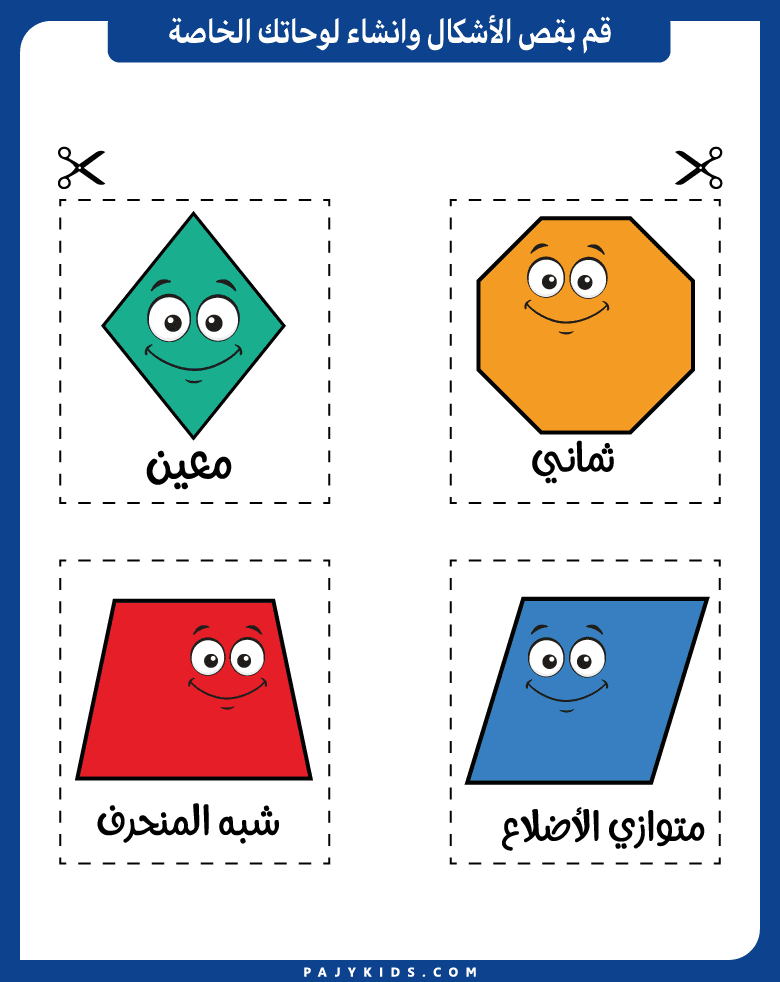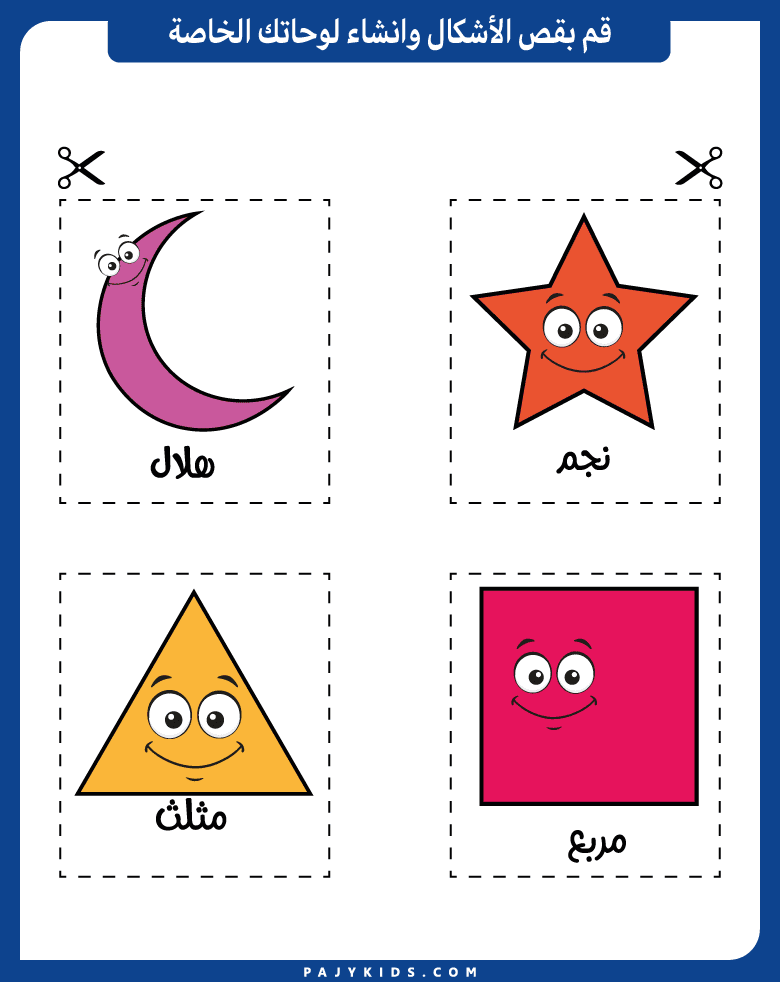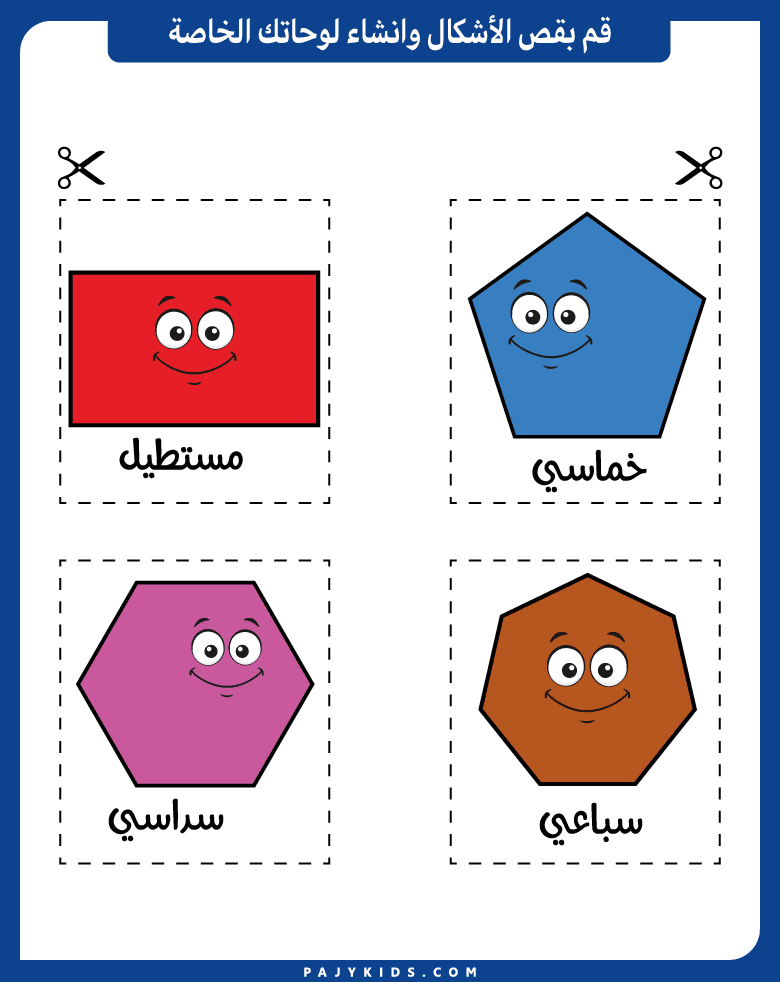Table of contents
Arabic Shapes: Kindergarten is a critical stage for developing foundational skills in young learners. Integrating educational activities that are both engaging and culturally relevant is key to effective learning. For children learning in Arabic, “cut and paste shapes” activities offer a perfect blend of fine motor skill development, shape recognition, and vocabulary building. These hands-on tasks transform simple shape identification into an interactive game, significantly enhancing cognitive development.
Benefits of Hands-On Arabic Shapes Learning
“Cut and paste” activities focused on Arabic Shapes provide multifaceted educational benefits. Firstly, the act of cutting along lines and pasting pieces onto a target sheet refines fine motor skills, which are essential for future writing and self-help tasks. Secondly, these activities reinforce shape recognition; as the child manipulates a cut-out square (مُرَبَّع – murabba’) or triangle (مُثَلَّث – muthallath), they are actively associating the visual form with its Arabic name. Furthermore, following simple instructions in Arabic during the activity aids in listening comprehension and early literacy development. Creating resources with clear, bold Arabic Shapes and corresponding names ensures children build a strong visual-linguistic link.

Integrating Arabic Shapes Vocabulary
A crucial element of these kindergarten activities is the intentional introduction and repetition of Arabic Shapes vocabulary. Teachers and parents should explicitly name the shapes in Arabic during the process, using phrases like: “Cut the circle (دَائِرَة – dā’irah)” or “Paste the rectangle (مُسْتَطِيل – mustaṭīl) here.” This constant auditory input strengthens the child’s Arabic language acquisition. Printable worksheets can include the name of the shape printed large next to the outline, allowing for visual reinforcement. By the end of the activity, the child should be able to identify and orally name the fundamental Arabic Shapes with confidence.

Creating Engaging Arabic Shapes Worksheets
To maximize engagement, worksheets for Arabic Shapes cut and paste should be colorful, thematic, and age-appropriate. Instead of just pasting shapes onto a blank page, activities can involve using the shapes to create a picture (e.g., using a rectangle for a house body and a triangle for the roof). The shapes to be cut out should have thick, easily visible lines to guide little hands. Furthermore, offering both a simple version (pasting the shape onto an identical outline) and a more advanced version (pasting the shape to complete a complex picture) allows for differentiation. Including cultural elements or familiar objects in the context of the Arabic Shapes design can also make the activity more relatable.

Assessment and Review of Arabic Shapes Mastery
Cut and paste tasks serve as a natural, low-stress assessment tool for shape mastery. By observing how accurately and quickly a child completes the activity, educators can gauge their understanding of Arabic Shapes recognition and their motor skill development. After the hands-on portion, a review phase is vital. This can involve a quick game where the child points to the named shape or uses the cut-out shapes to sort them into groups. This comprehensive approach, moving from recognition to manipulation and then to review, ensures deep and lasting learning of the basic Shapes and geometric concepts in Arabic.
Counting for Preschool: Essential Worksheets to Build Foundational Math Skills
